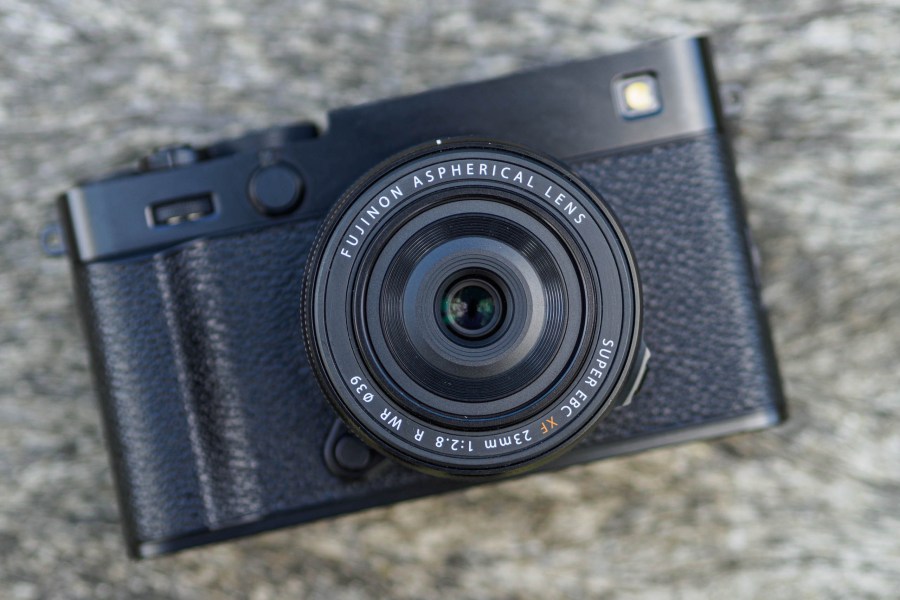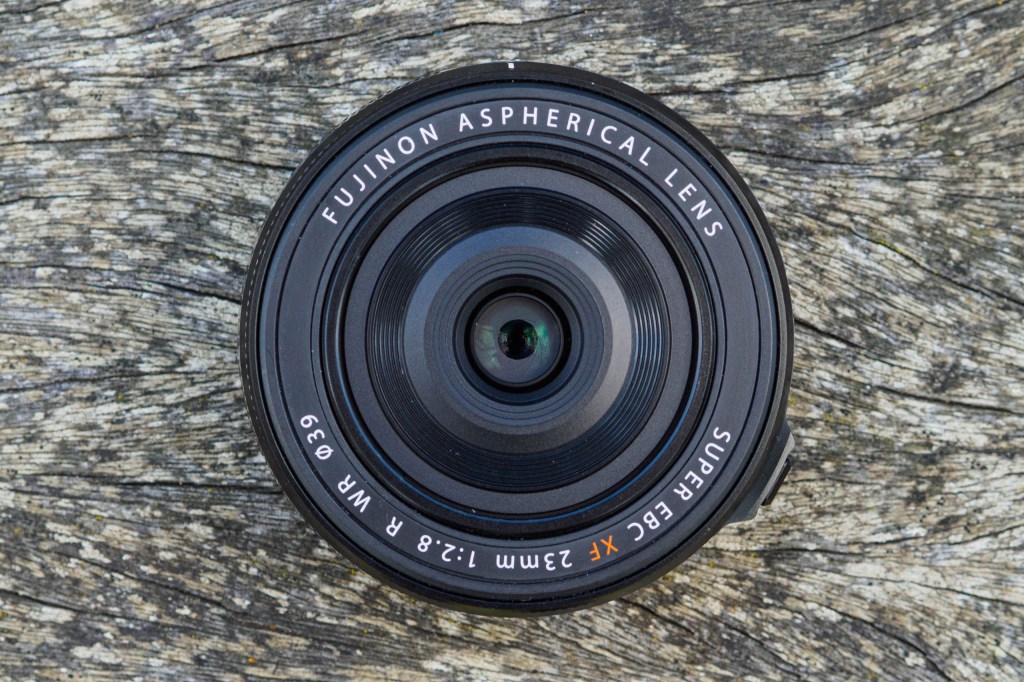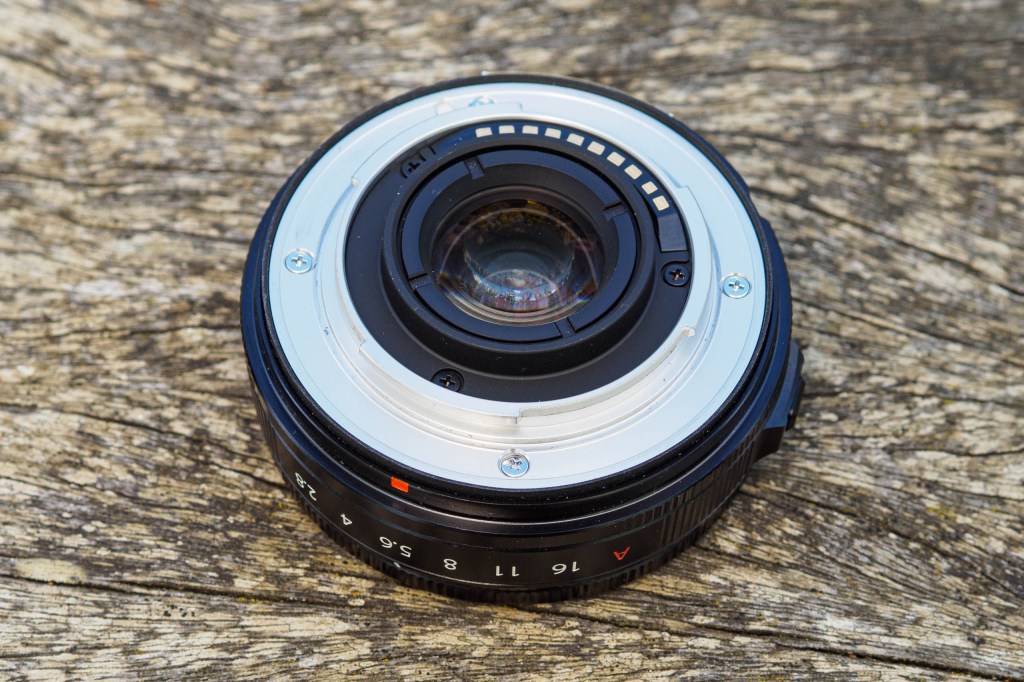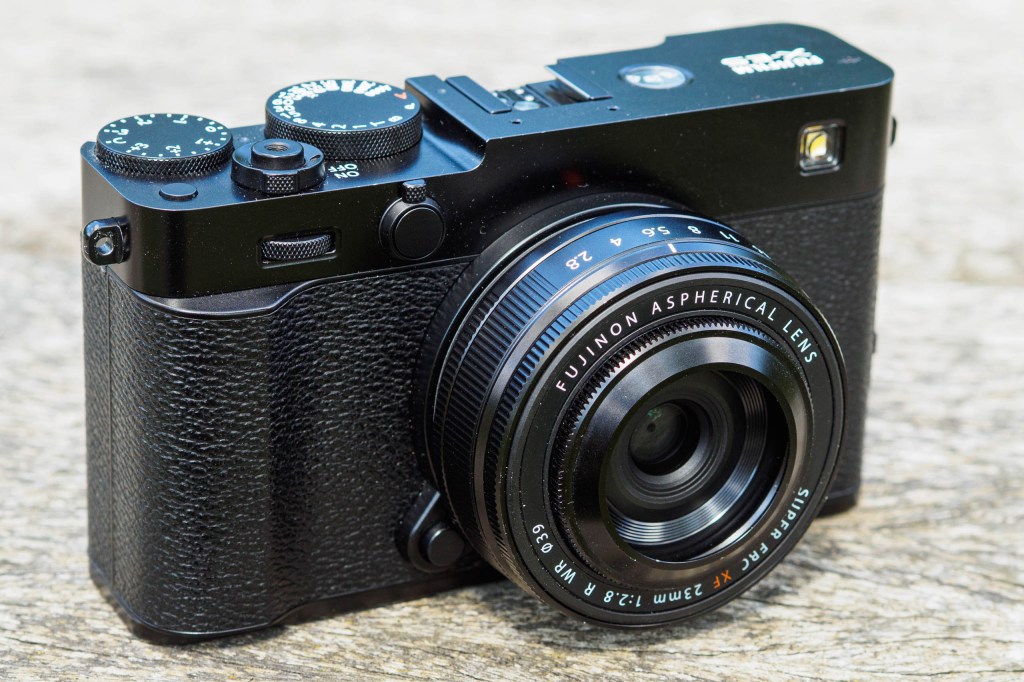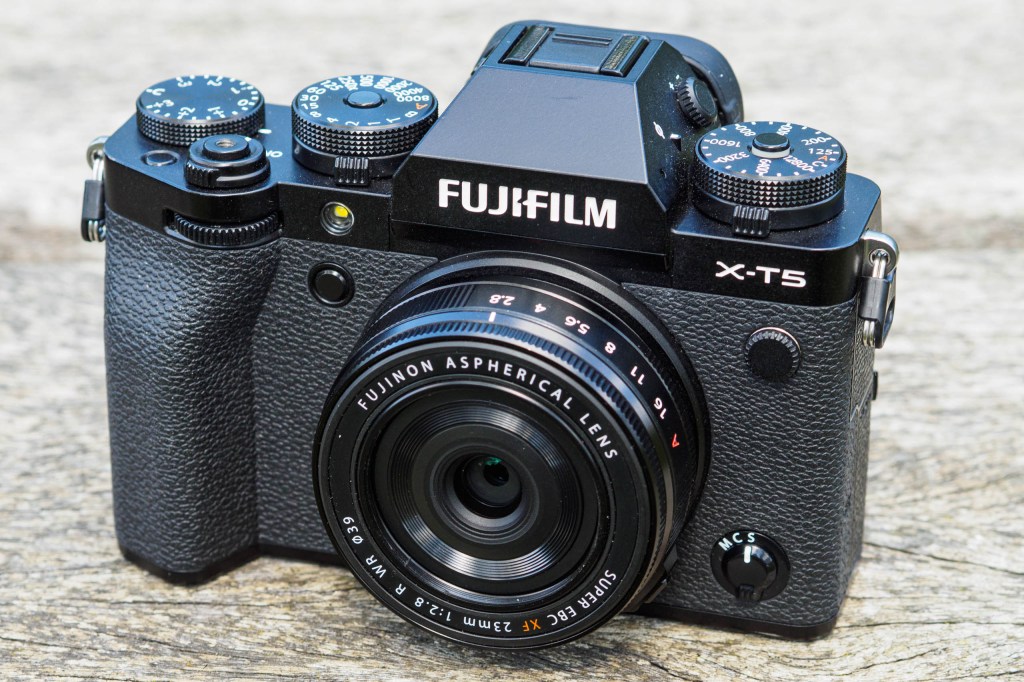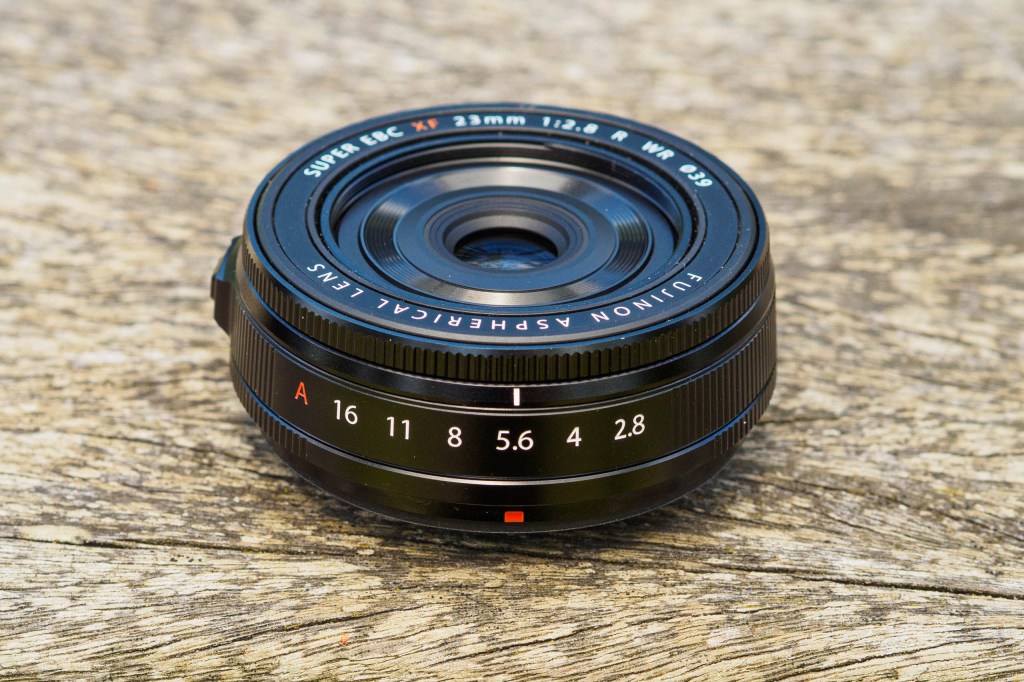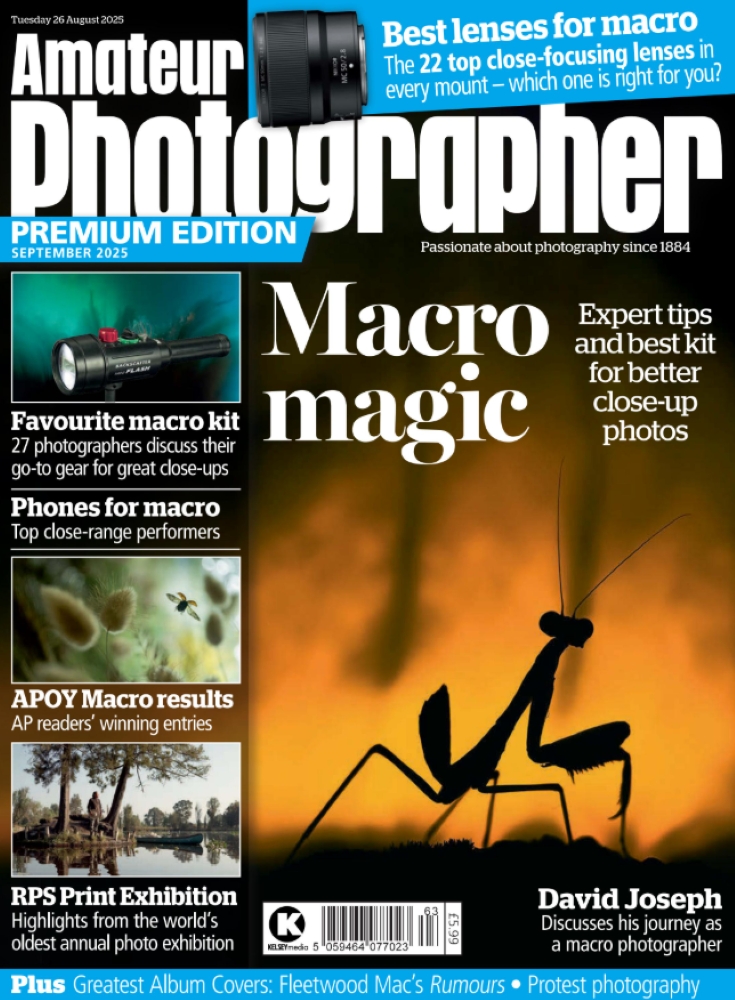Amateur Photographer verdict
The Fujifilm XF 23mm F2.8 R WR delivers impressive image quality given its diminutive size, with sharp, clean images. Autofocus isn’t the fastest,- Very good optics
- Extremely small and lightweight
- Weather-sealed build
- Autofocus isn’t the fastest
- Visible focus breathing
The Fujifilm XF 23mm F2.8 R WR is a slimline ‘pancake’ lens, that was originally introduced as the kit lens for the charismatic X-E5 rangefinder-style mirrorless camera. But now, it’s available to pre-order as a standalone item. It comes in a choice of black or silver finishes, and costs $499 / £399. It’s temptingly small and affordable, but is it one of the best Fujifilm X-mount lenses?
Fujifilm XF 23mm F2.8 R WR at a glance:
- 35mm equivalent angle of view
- Weather resistant construction
- Just 20mm long and 90g
- For Fujifilm X-system cameras only
Size-wise, this 23mm lens is very similar to the firm’s older XF 27mm F2.8 R WR, at just 23mm long and 90g. But it still includes an aperture ring and weather-resistant construction. On paper, the most meaningful difference between the two lenses is the focal length; the 23mm is equivalent to 35mm in full-frame terms, while the 27mm is equivalent to 41mm. This may not sound like much, but in fact, it means the 27mm gives a noticeably tighter field of view.
Given its size and focal length, the 23mm f/2.8 will be most attractive to X-system users looking for a lightweight, unobtrusive lens for everyday use. It could be particularly attractive for travel or street photography, for example. But does it make any troublesome compromises to achieve its tiny size?
Features
Optically, the XF 23mm F2.8 lens employs 8 elements in 6 groups, including two aspherical elements to suppress aberrations and deliver cross-frame sharpness. Despite its diminutive dimensions, it also incorporates an aperture diaphragm with 11 curved blades, with the aim of producing attractive-looking out-of-focus areas.
Like many pancake designs, the entire optical group moves back and forwards for focusing. At its minimum focus distance of 20cm, the front ends up protruding about 4mm from the barrel. The lens retracts automatically when the camera is turned off.
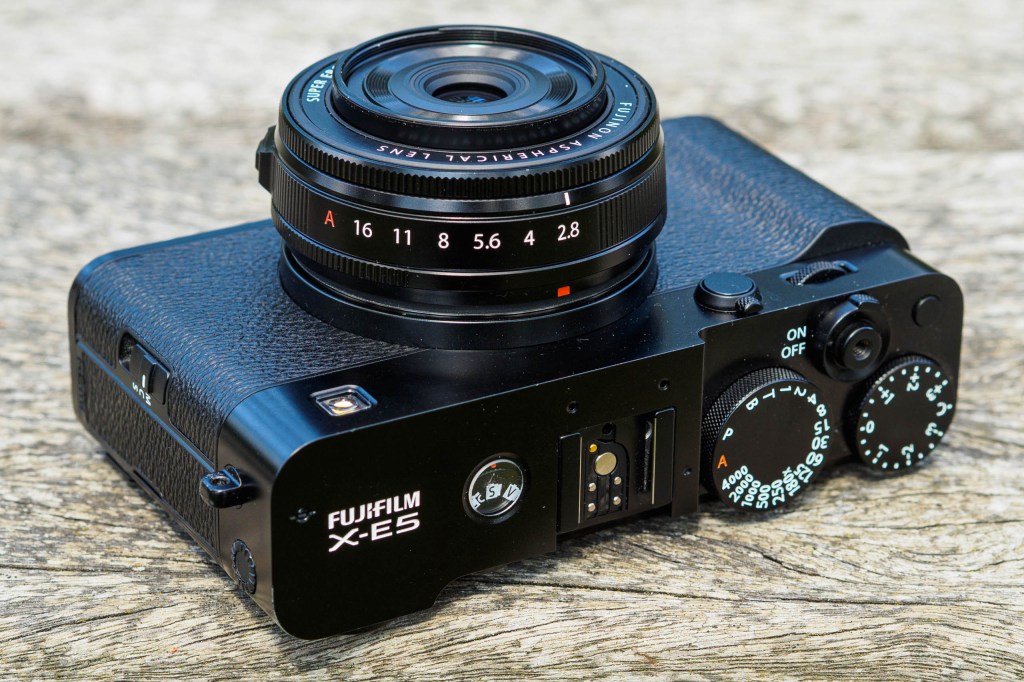
Filter users are accommodated via a 39mm thread. While you don’t get a hood if you buy the lens in a kit with the X-E5, you will get one if you purchase the lens on its own. Like the 27mm, it comes with a 39mm screw-in hood and plastic push-on cap, which together are the same thickness as the standard clip-on cap. I’d just leave the hood in place all the time.
Build and design
Design-wise, the XF 23mm F2.8 is a lot like its 27mm counterpart. It is, however, subtly differently styled, with a barrel that tapers slightly towards the front. The focus ring is much slimmer, too, but still perfectly usable.
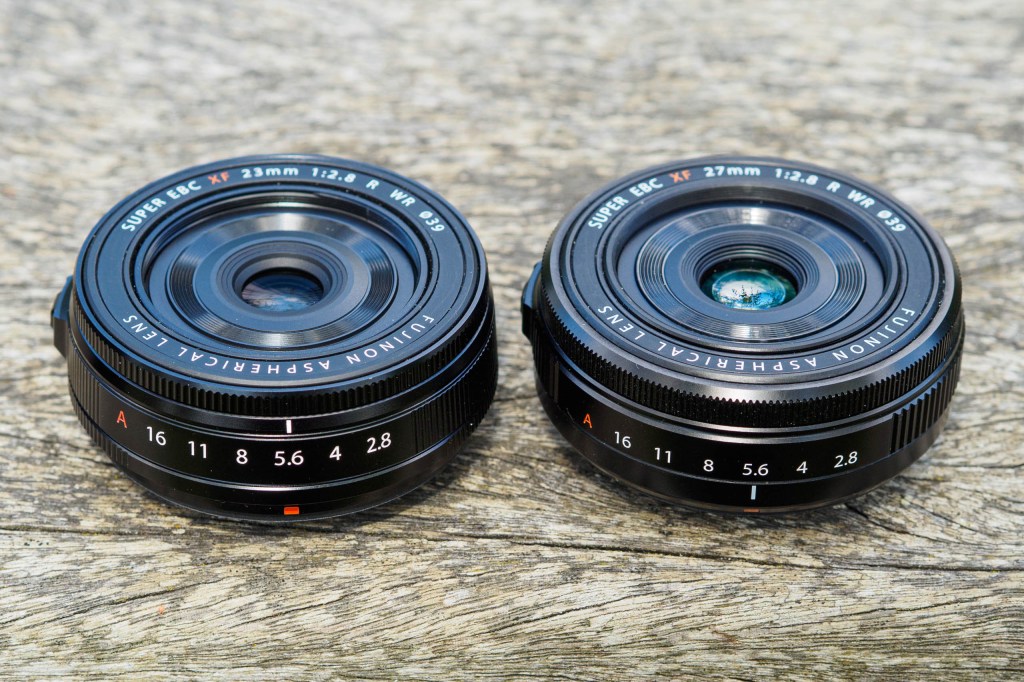
Fujifilm has placed a pair of small, ridged grips either side of the barrel and behind the aperture ring, for use when changing lenses. This looks like it should be a welcome improvement over the 27mm, but unfortunately, I found them too slim to be useful. This is infuriating, as there’s several millimetres more blank space behind them, that Fujifilm could have used to make them more effective.
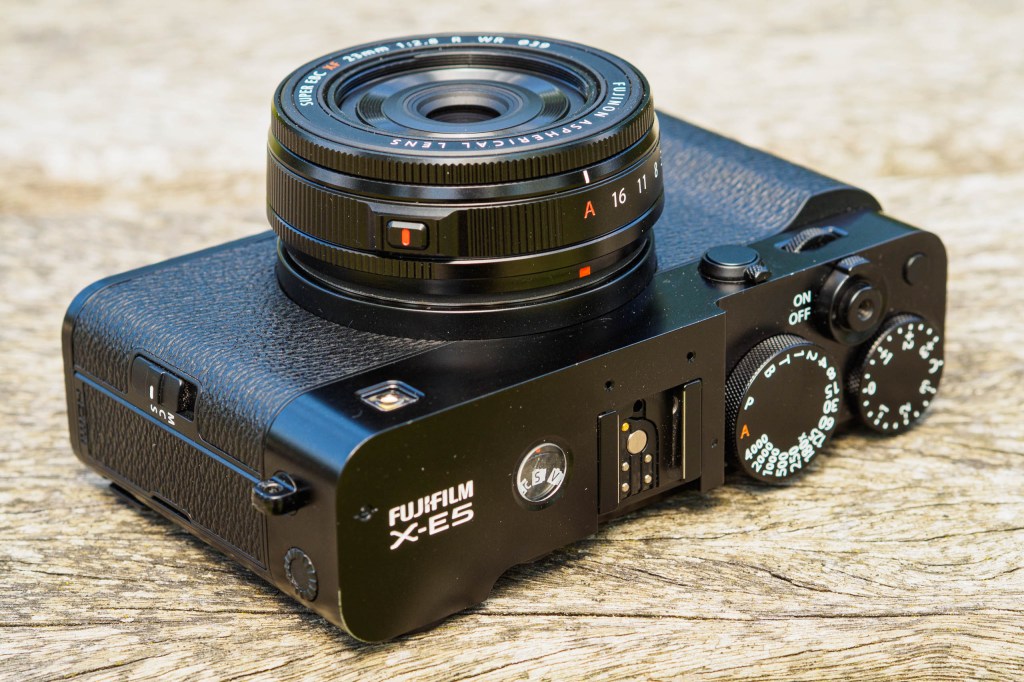
Turning our attention to the aperture ring, this gives settings down to f/16, with click-stops that are perhaps just a bit ‘softer’ than on the 27mm lens. Twisting the ring past f/16 sets the aperture to its A position, which passes control to the camera body, enabling the use of program or shutter priority modes on bodies like the X-T5 and X-E5 that don’t have mode dials. You need to hold down a button on the aperture ring to turn it back out of the A position.
The aperture stays circular down to f/16, and in a change in behaviour compared to the 27mm, it now closes down, rather than opens up, when you turn off the camera. Presumably the rationale is that this helps to protect the sensor from bright light.
Despite the lens’s small size and light weight, construction feels pretty robust, including a metal mount. One neat stylistic touch is that the weather-sealing gasket around the mount is colour-matched to the lens. So it’s black on the black version, and pale grey on the silver model.
Those petite dimensions mean that you’ll be happy to carry the lens around all day, either on the camera or in your bag. I used it mostly on the compact-bodied, rangefinder-style Fujifilm X-E5, for which it’s a great match. But it works equally nicely on the larger, SLR-shaped Fujifilm X-T5.
Autofocus
When it comes to autofocus, the speed and noise is very much like that of the XF 27mm F2.8 R WR. This means the focus motor is quiet in operation, but not entirely silent. It’s reasonably snappy, too, but clearly nowhere near as fast as most internal-focus lenses.
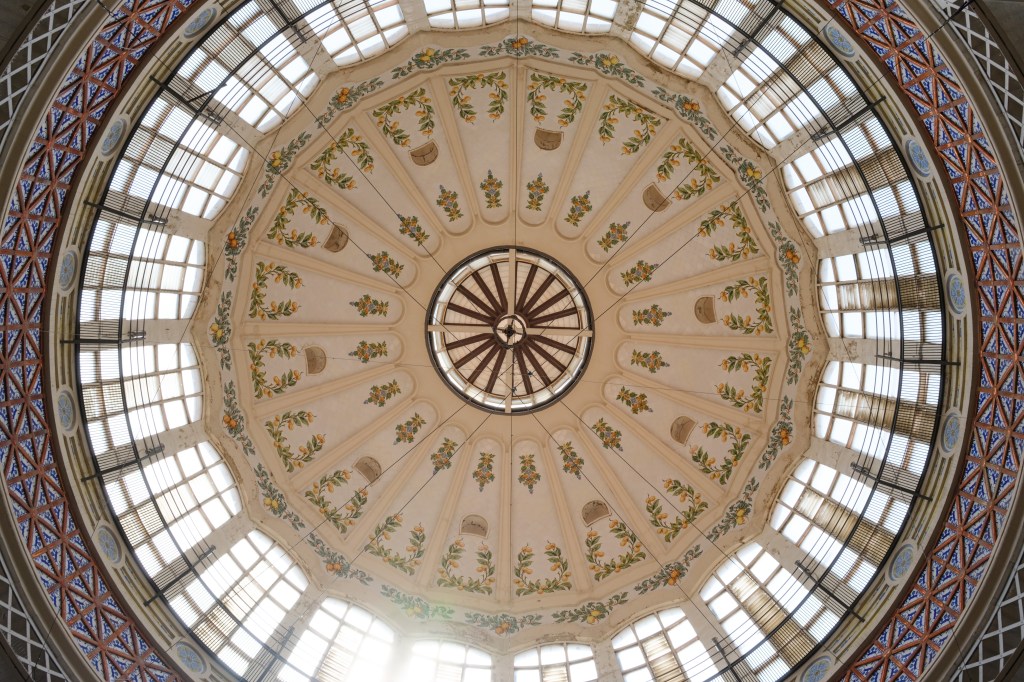
I don’t think that’s a big problem though, given that this isn’t a lens you’d obviously choose for high-speed sports and action. Instead, it’s a perfectly acceptable compromise for the lens’s tiny size. This is also much the same as the Fujifilm X100VI’s built-in 23mm f/2 lens.

One inevitable consequence of the unit-focusing design, though, is that the lens does exhibit visible breathing, with the angle of view getting narrower as it’s focused closer. While this doesn’t really matter to photographers, it means the lens isn’t the ideal choice for those who like to pull focus from one subject to another during video recording.
Performance
Not so long ago, pancake lenses had a reputation for being optically compromised. It simply wasn’t possible to fit enough lens elements into the available space to correct fully for lens aberrations. But that’s not true anymore, and instead the XF23mm F2.8 R WR delivers impressively clean and detailed images that hold up well to the demands of Fujifilm’s current 40MP cameras.

This lens is, in fact, impressively sharp right across the frame, especially when stopped down to f/5.6. Unsurprisingly, contrast is slightly lower in the centre of the frame at f/2.8, and the corners also look just a little softer when examined at 100% onscreen. But in context, the lens is every bit as sharp across the frame at f/2.8 as it is at f/11, when diffraction blurring starts to kick in visibly.
Personally, I’d still be perfectly happy using both these apertures, and anything in between. But I’d generally avoid f/16, unless you really need the deepest possible depth-of-field, or wish to slow down your shutter speed for creative blur.

With this being a unit-focus lens, though, there’s no correction for close-focusing. As a result, the 27mm doesn’t maintain its sharpness across the focus range, in the way we’ve become accustomed to seeing with modern lenses. This means you won’t get super-sharp results wide open at minimum focus, with the characteristic ‘glow’ of spherical aberration taking the edge off fine detail.
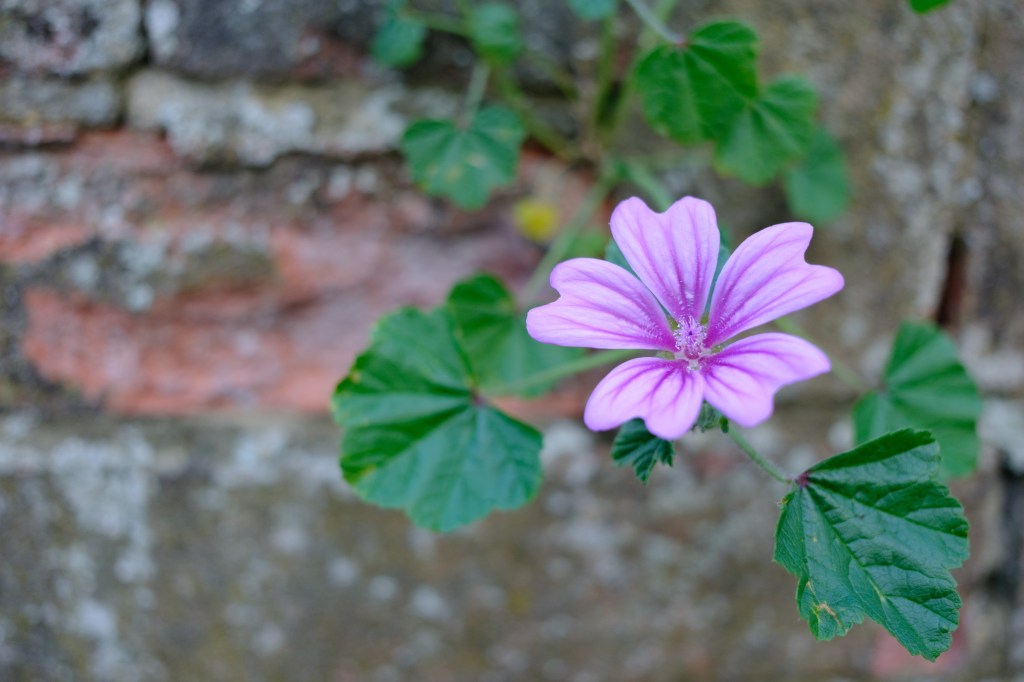
Out-of-focus backgrounds can sometimes look a little messy, too, with bright edges around highlights, and a pronounced cat-eye effect towards the corners at f/2.8. This is exacerbated by the slightly wide field of view and relatively small maximum aperture, which means you can get a lot of small, bright highlights that might distract from your subject. So this isn’t necessarily the first lens I’d reach for when shooting close-ups.

If you make a point of switching off profiled corrections in raw, you’ll see pronounced vignetting at f/2.8, which reduces significantly at f/4, and is almost entirely gone by f/5.6. There’s also clear barrel distortion. But the beauty of integrated software corrections is that most users will never even see either; instead, they’ll just get detailed images that are evenly illuminated and geometrically correct.
Fujifilm XF 23mm F2.8 R WR: Our Verdict
With the XF 23mm F2.8 R WR, Fujifilm users now have two compact pancake primes to choose between, when they want a lightweight kit. As it turns out, the 23mm has all the same charms as the older XF 27mm F2.8R WR. It’s small and inconspicuous, while punching well above its weight optically.
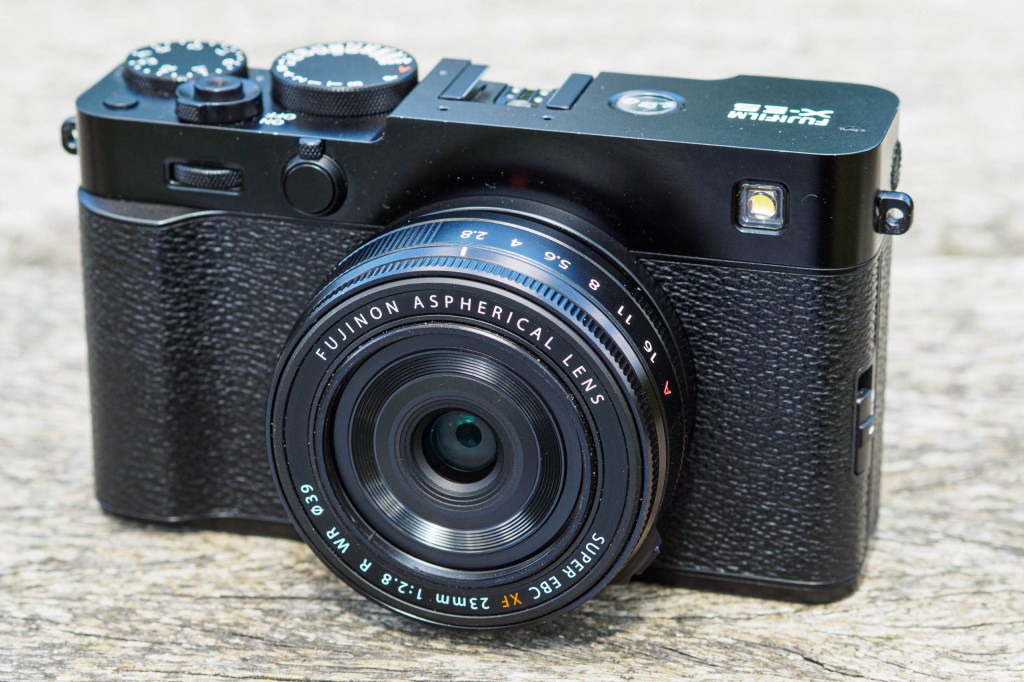
At just 23mm long and 90g weight, this is a lens that you can easily drop into a bag or pocket and carry around all day. And it’s not just for use with the X-E5 or other small bodies, but instead, it’s an equally good match to larger cameras such as the X-T5, too.
It does, however, also share the same minor tribulations as the 27mm regarding focusing, with slightly sluggish autofocus and visible breathing. I don’t think either should remotely be a dealbreaker for photographers, but they’re something you need to be aware of.
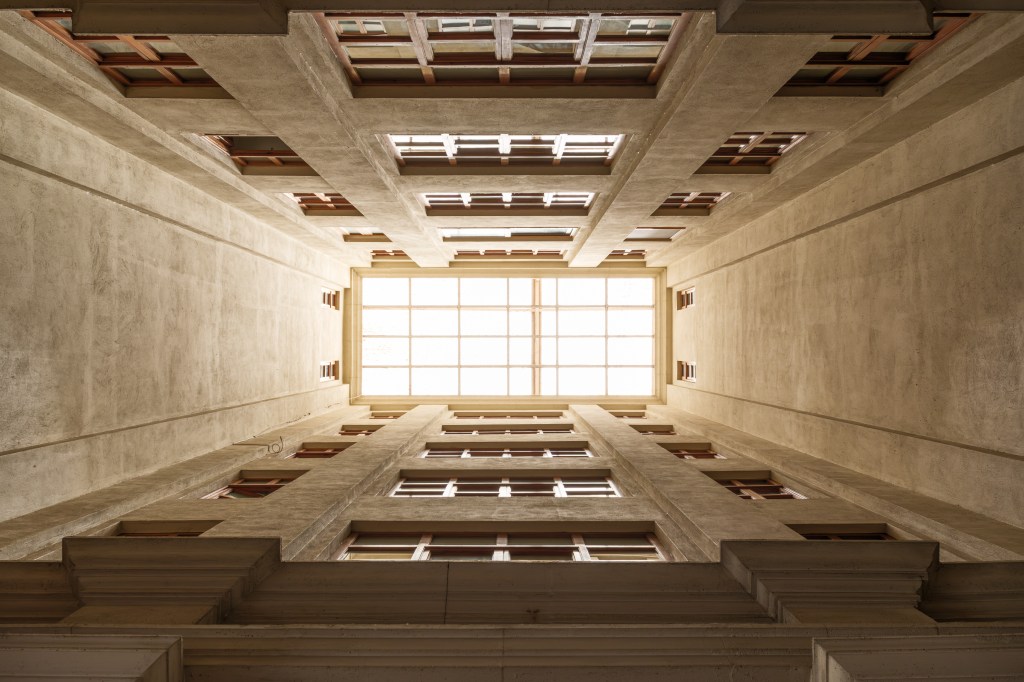
Ultimately, if you’re looking to buy one of these lenses, then in terms of functionality and optical quality, they’re much more similar than they are different. This means that the focal length becomes by far most important factor when choosing between them. Here, there’s no right or wrong answer; it’s entirely a matter of preference. Personally, I’d take the 27mm, but if you’d rather have that slightly wider view, the 23mm f/2.8 comes just as highly recommended.

Follow AP on Facebook, Instagram, YouTube and TikTok
Fujifilm XF 23mm F2.8 R WR Full specifications
| Price | $499 / £399 |
| Filter Diameter | 39mm |
| Lens Elements | 8 (2 aspherical) |
| Groups | 6 |
| Diaphragm blades | 11(curved) |
| Aperture | f/2.8 – f/16 |
| Minimum focus | 20cm (0.15x magnification) |
| Length | 23mm |
| Diameter | 61.8mm |
| Weight | 90g |
| Lens Mount | Fujifilm X |
| Included accessories | Caps; hood and push-on cap |

